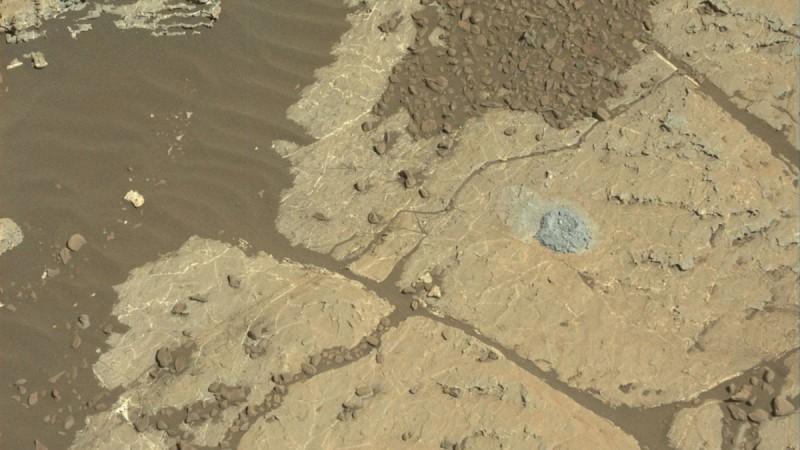
Ever since it ceased drilling on Mars surface, NASA's Curiosity rover took a break from making it to headlines but no longer. NASA scientists have successfully found a way out of the troubled motor and rover is back in action using its robotic arms, though it means less energy to drill.
Curiosity has been exploring the Gale Crater since its descent on the Red Planet in 2012 and is set to move away from its current location, necessitating the urgent repairs to collect samples at its current location.
In December 2016, the rover stopped drilling after collecting samples 15 times since its landing in 2012. It was originally designed to drill using two finger-like stabilizers to steady itself against rock but a faulty motor prevented it. The scientists had almost ruled out its repair.
This time, JPL engineers are using a new method to drill and extract samples, called Feed Extended Drilling. It has made an incursion of about two inches into a target known as "Duluth", using the force of its robotic arm, the way we drill into a wall at home.
"The team used tremendous ingenuity to devise a new drilling technique and implement it on another planet," said Steve Lee, Curiosity Deputy Project Manager at NASA's Jet Propulsion Lab. "Those are two vital inches of innovation from 60 million miles away. We're thrilled that the result was so successful," he said.
Developed after the mechanical failure faced by Curiosity, the new technique demonstrates a milestone in drilling techniques employed by the rover.
Tom Green, the engineer behind developing the new technique is upbeat but cautious. "With each new test, we closely examine the data to look for improvements we can make and then head back to our test bed to iterate on the process," said Green.
Currently, the rover is located near Vera Rubin Ridge, that contains both gray and red rocks. The latter are rich in hematite, an iron oxide mineral that forms in the presence of water, which might shed light on the origin of the ridge and the history of its interaction with water in the past.
The current drilling of the Martian rocks at Lake Orcadie to collect the samples of the region will be crucial before Curiosity moves on to a new location away from Gale Crater.














